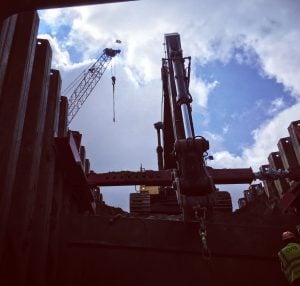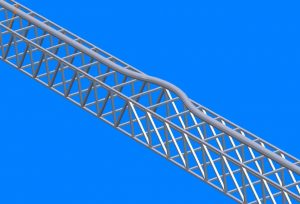Connections are everything, or so we are told. Political connections promote the aspirations of some while business connections promote the success of others. But what does that have to do with scaffolding? Just as business or social connections are important to individuals, connections of individual scaffold components are important to scaffolding.
Whether it is supported scaffolds or suspended scaffolds, connections are critical to the structural capacity and safety of the scaffold. These connections include items such as the coupling pins and cross brace studs on frame scaffolds, caster connections, wedge connections on systems scaffolds, couplers on tube and coupler scaffolds, and wire rope clips on suspended scaffolds, to name a few. Are these connections critical? In a word, absolutely! Connections transfer loads and also assure other components can support loads. For example, the cross brace and stud on a scaffold frame transfers loads while also ensuring the scaffold leg remains plumb. Some connections are typically designed to transfer loads only in compression (coupling pins) while other connections may only transfer loads in tension (wire rope clips).
Connections may only transfer vertical loads, others may only transfer horizontal loads, while others may transfer both. Still other connections may resist a twisting action. A good example of this is the rigid (right angle) coupler that can resist a bending force while the swivel coupler can only resist a force directly through the connection. Sometimes a connection will transfer loads for which it was not necessarily designed. A frame scaffold suspended from above will subject the coupling pin and retainer pins to forces that the manufacturer never intended. In this case, the coupling pin, designed only to align the scaffold legs, now must transfer tensile loads via the retaining pins; is it strong enough to do this? Can the retaining pins also transfer this load? If you don’t know, you better have a qualified person check it out.
A knowledgeable erector will understand both the limitations of the connections involved with a scaffold and also how those connections are being used. Furthermore, the knowledgeable erector will understand the forces in the scaffold and how the connections work to transfer the loads. A cross brace wired to a scaffold leg clearly indicates that the erector completely misunderstands the importance of the stud. An erector who uses a cheater bar to tighten the coupler on a scaffold clearly needs some retraining. Additionally, the erector who inserts a nail between the coupler and the scaffold leg because the coupler is the wrong size is showing his/her ignorance of the mechanics of a coupler. Even the connection between a guardrail and its support must be understood. A rail wired to another may resist a pulling force but the connection itself may slide on the connecting member, negating the use of the rail. Using the wrong sized clip to secure a wire rope, or improper placement of that clip, exposes the scaffold user to unnecessary hazards and confirms the erector’s lack of expertise and training.
This information begs the question; what’s the point of this article? The obvious point is that scaffold erectors must understand the limits of their expertise and never expose scaffold connections to forces for which they are not designed. The less obvious point of this article is that if you are going to be inventive with the scaffold, you must be familiar with the forces involved with the scaffold, and confirm that the connections can safely transfer these loads. Not understanding these forces, and not having connections that can handle these forces, is an invitation to disaster.
Scaffolds can do marvelous things and they can be used in very innovative ways for many different reasons. Know your limitations and the scaffold’s limitations. Manufacturers and other qualified persons will be able to counsel you on the strength of connections and the limitations of those connections. At times this newsletter highlights the unique uses of scaffolds. Construct your innovative scaffold properly and this newsletter may highlight it in a future article. Of course, overlook the connections and your unique, but failed scaffold may also be highlighted in this newsletter. Frankly, I would much rather talk about properly constructed scaffolds with proper connections. How about you?













